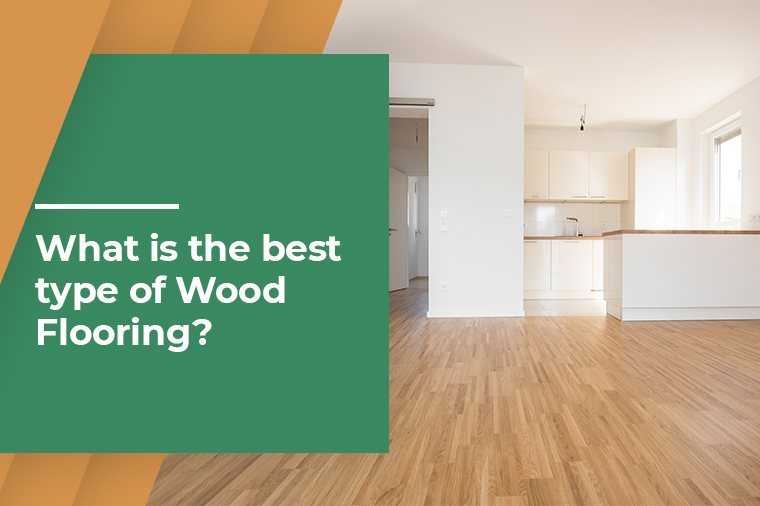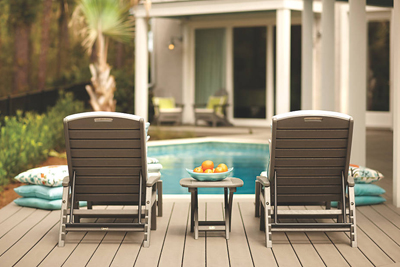What is the best type of Wood Flooring?

To All Our Valued Customers, Over the past few years, the Covid 19 Pandemic has forced us to adapt and change the way we do things on a day-to-day basis. Florida Lumber is no exception. To make sure that we remain strong and competitive in the market for the years to come, Florida Lumber has had to adjust and change our vision for the future. In the last 2 years, we have stopped selling Sheetrock and drywall products, roofing felt and roofing materials, and have even closed on Saturdays.
Over the last few months, we have been transitioning our way out of the door supply business so on August 31, 2022, our door shop will stop assembling doors. We will continue liquidating our doors from inventory until we are out of material.
Some customers have asked if we are closing or even moving locations. To set the story straight, we are not closing or selling the business and we are not moving. These changes are all part of our new vision and path to continue serving South Florida and increasing our footprint in the construction supply industry.
Our focus is going to be on Lumber, Construction Materials, Rebar Fabrication and Rebar Accessories. As we have liquidated some of the items that we don’t sell anymore we have created more space to buy a larger volume of our core items and pass on the savings to our customers.
In the next year you will start seeing changes that will help improve our ability to serve you, our customers. We appreciate your business and your patience as Florida Lumber’s new vision becomes reality.
A Todos Nuestros Valiosos Clientes En los ultimos anos, la pandemia de el Virus (Covid 19) nos ha forzado a adaptarnos y cambiar la forma de hacer cosas en el dia a dia. Florida Lumber no ha sido una excepcion.
Para asegurarnos de mantenernos fuertes y competitivos en el mercado en los anos venideros, Florida Lumber ha tenido que ajustar y cambiar nuestra vision para el futuro. En los dos ultimos anos hemos dejado de vender los productos de yeso (sheetrock), paneles de yeso (drywall), tela asfaltica (roofing felt), materiales de techo y cerramos los Sabados. En los ultimos meses, hemos estado en transicion para salir del negocio de suministro de puertas, en Agosto 31, del 2022 nuestra tienda de puertas dejara de construir y/o cortar puertas. Vamos a continuar liquidando nuestro inventario de puertas haste que terminemos todo el material. Algunos de nuestros clientes han preguntado si estamos cerrando o si nos estamos moviendo a otra localidad. La verdad es que no estamos cerrando, no estamos vendiendo y no estamos cambiando de localidad. Estos cambios son todos parte de nuestra nueva vision y camino a continuar sirviendo al estado sur de la Florida y incrementar nuestras huellas en la industria de suministros de construccion.
paneles de yeso (drywall), tela asfaltica (roofing felt), materiales de techo y cerramos los Sabados.
En los ultimos meses, hemos estado en transicion para salir del negocio de suministro de puertas, en Agosto 31, del 2022 nuestra tienda de puertas dejara de construir y/o cortar puertas.
Vamos a continuar liquidando nuestro inventario de puertas haste que terminemos todo el material. Algunos de nuestros clientes han preguntado si estamos cerrando o si nos estamos moviendo a otra localidad.
La verdad es que no estamos cerrando, no estamos vendiendo y no estamos cambiando de localidad. Estos cambios son todos parte de nuestra nueva vision y camino a continuar sirviendo al estado sur de la Florida y incrementar nuestras huellas en la industria de suministros de construcción.
2431 N.W. 20TH ST.
MIAMI, FL 33142
PHONE: (305) 635-6412
Sales Fax: (305) 633-4054
Accounting Fax: (305) 635-3723
Email: sales@tloridalumber.com

Hardwood floors are both durable and long-lasting. They don't peel or break; they don't mildew like that old shag. Natural hardwood floors are simple to refinish and restore, increasing the value of any home. Hardwood flooring is usually 3/4′′ thick, for each plank is a single large block. Depending on the temperature and board width, hardwoods can expand and contract. Hardwood flooring is often more costly than engineered flooring and necessitates the installation of a subfloor as well as multiple coats of protective finish. The most common hardwoods used in flooring are those that are easily accessible.
Choosing a Hardwood Floor
Aside from plank width, color, and grain, the most crucial factor to consider when selecting a type of hardwood flooring is strength and durability. Hardwoods, such as oak and maple, are derived from deciduous trees, whereas softwoods are derived from conifers. Softwoods such as pine, poplar, walnut, and spruce are preferable for furniture and cabinetry. You can also select from tropical hardwoods like mahogany, teak, and rosewood. However, because these hardwoods aren't native to North America, they can be significantly more expensive.
Why Engineered floor is better?
In contrast to solid hardwood floors, cut from a single piece of wood, engineered wood floor planks are composed of two layers: the lamella, or upper part, over a supporting core layer. The core can be formed of "wood ply" (many thin plies of timber glued together), "finger core" (tiny pieces of milled timber running perpendicular to the upper part), or fiberboard. Engineered flooring is stable because each layer is at a 90-degree angle to the one above. A truly engineered hardwood floor has a surface layer of sawn wood rather than veneer. In the manufacturing process, no wood composites or plastic are employed. Engineered hardwood could be put over concrete without needing a different subfloor.
When searching for an engineered floor, numerous wood veneer alternatives are available, ranging from traditional oak to exotic Brazilian cherry. Traditional woods include oak, maple, walnut, and mahogany, while beach and pine are lighter and much more appropriate for a modern area. You'll also have options for plank width — broad or narrow, edging, beveled or square, and installation system. The most well-known of them is "tongue-and-groove." Each plank has one side and one end notched to fit firmly with adjacent planks.
Types of Wood Used
Each species of tree has advantages and disadvantages. Because each species has a distinct cellular structure, they have distinct physical qualities. Even though they are all wooden flooring, their attributes differ. Furthermore, each hardwood's grain patterns, color, and hardness vary.
Request a Quote for Wood Floors
Oak Wood Floors
Oak is not only one of the best economic forms of wood, but it is also incredibly durable. With a hardness rating of 1290, Oak withstands traffic effectively. Hardness is connected to how effectively a wood resists dents and scratches, as well as how much the wood expands and contracts in response to changes in temperature and humidity.
Oak is not the most challenging wood to work with. Other, far more complex varieties exist, such as Brazilian walnuts, with a hardness rating of 3680. However, this type of wood is not always the best option. Tough wood is much more challenging to cut and nail with. As a result, the cost of the wood and the installation of the flooring is higher. Sanding and refinishing are also more expensive.
Hickory Wood Floors
Hickory is the hardest commercially available wood flooring species. Using hickory provides a charming rustic appearance, making it a favorite flooring option. Its color ranges from creamy to medium brown.
Hickory flooring has a hardness rating of 1820. As a result, it is exceptionally sturdy and resistant to scratches and dents. Hickory wood flooring is perfect for high-traffic areas and pet-friendly households. With good care, it can last a lifetime and requires virtually little upkeep. Refinishing will be required less frequently than with Oak. While its hardness provides these advantages, the expense of installation, sanding, and refinishing will be higher.
Additional Read
WHAT IS A BASEBOARD, AND HOW TO SELECT AN ACCURATE BASEBOARD?
Maple Wood Floors
The color of maple is naturally milky. It has a lighter tint than oak and may appear yellow in a brightly lighted area. Maple is the most excellent choice for achieving a whitewash or grey effect. It is not, however, as stain-resistant as oak. It is used by homeowners who desire a natural-finish flooring to obtain the desired impression. Because of its durability, it is resistant to scratches and dents. Maple is a common gymnasium flooring material. Numerous maple species are available, each with a unique feel and durability for your flooring.
Bamboo Wood Floor
Bamboo is an eco-friendly flooring option, which is why it is becoming more popular. Bamboo is much less expensive than oak, although prices vary according to species. Bamboo may be glued to concrete floors and is a cost-effective flooring option, particularly for condos. However, only buy bamboo flooring from a reliable seller because certain species will not last. Furthermore, bamboo floors are challenging to clean and may reveal dents and stains. They are also water sensitive. Furthermore, unlike oak flooring, bamboo cannot be sanded.
Walnut Wood Floor
It is not as strict as the other flooring options discussed in this article. Walnut is a chocolate brown color that gives spaces a classy and inviting vibe. Light exposure tends to lighten the wood over time. Because of the light sensitivity, you should use area rugs after the first six months to prevent color fluctuations on the floor.
American Cherry Wood Floors
American cherry wood floors are costlier. Cherry is more difficult to deal with, despite being a softwood, as softer wood is more vulnerable to scratches and dents. It is better suitable for low-usage areas such as bedrooms. However, it has good dimensional stability. It means that shrinkage and expansions caused by temperature and humidity aren't a big deal. The attractiveness of a cherry wood floor stems from its stunning natural color and unusual grain pattern. Cherry's color is a deep reddish brown. The wood surface is light-sensitive, which causes it to darken.
Brazilian cherry wood floor
The hardness of Brazilian Cherry is high. It also has a wide color range, ranging from deep red to reddish to brownish tones and reddish to blended hues. Among exotic wood species, it is the most preferred flooring option. Manufacturers use it on wide planks because color changes in tiny strips can appear overly cluttered.
Conclusion
Because of its warmth, beauty, and abundant appearance, hardwood flooring has remained a popular flooring material. There are numerous hardwood flooring species to select from. A hardwood floor is beneficial when selling a home since it has a higher value than other types of flooring. However, all types of wood flooring are photosensitive to varying degrees — the color changes over time due to light exposure. Some wood floors lighten, while others darken. So, no matter what flooring you select, use caution regarding area rugs.
For more information visit our website by clicking here.

